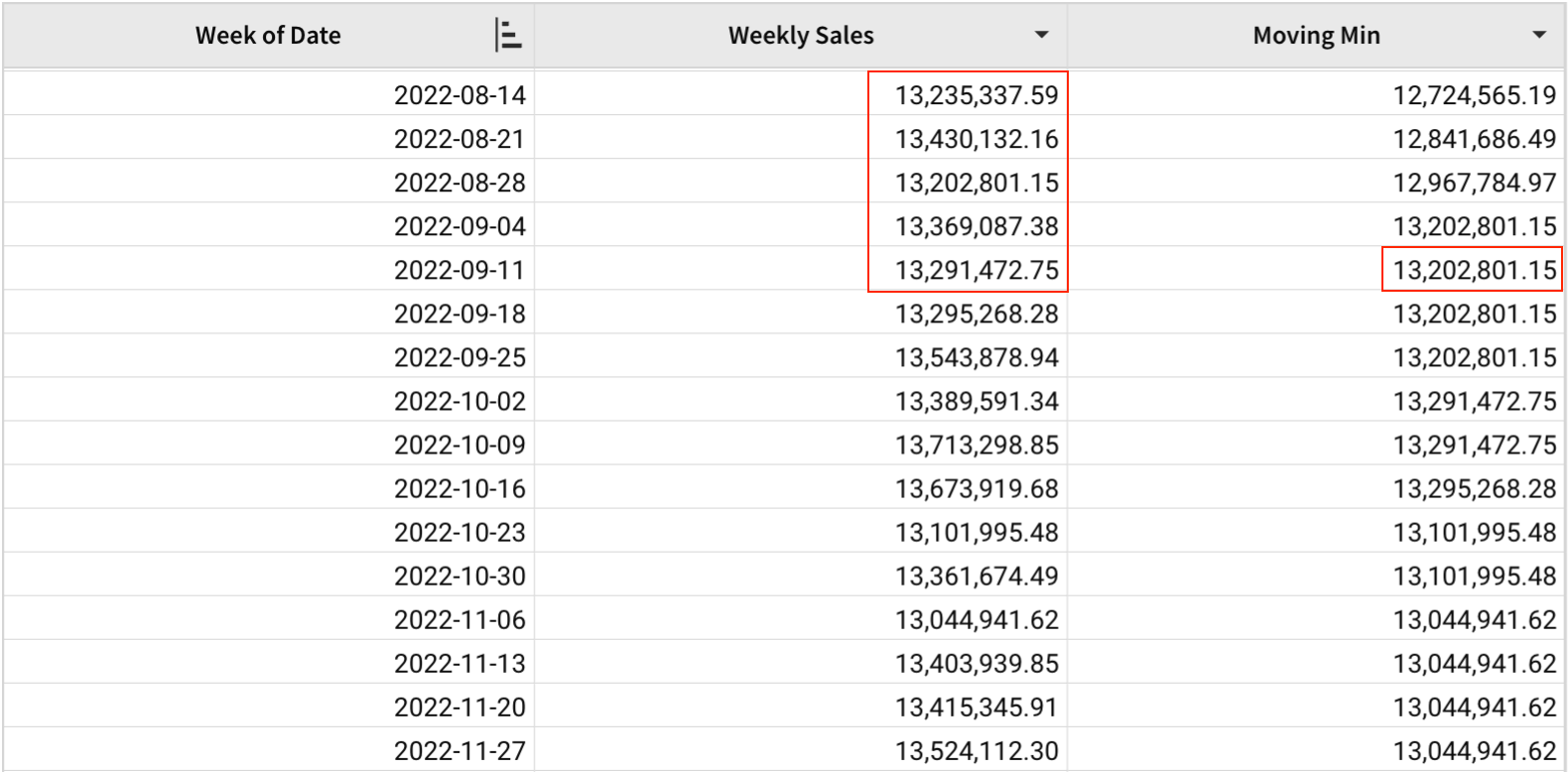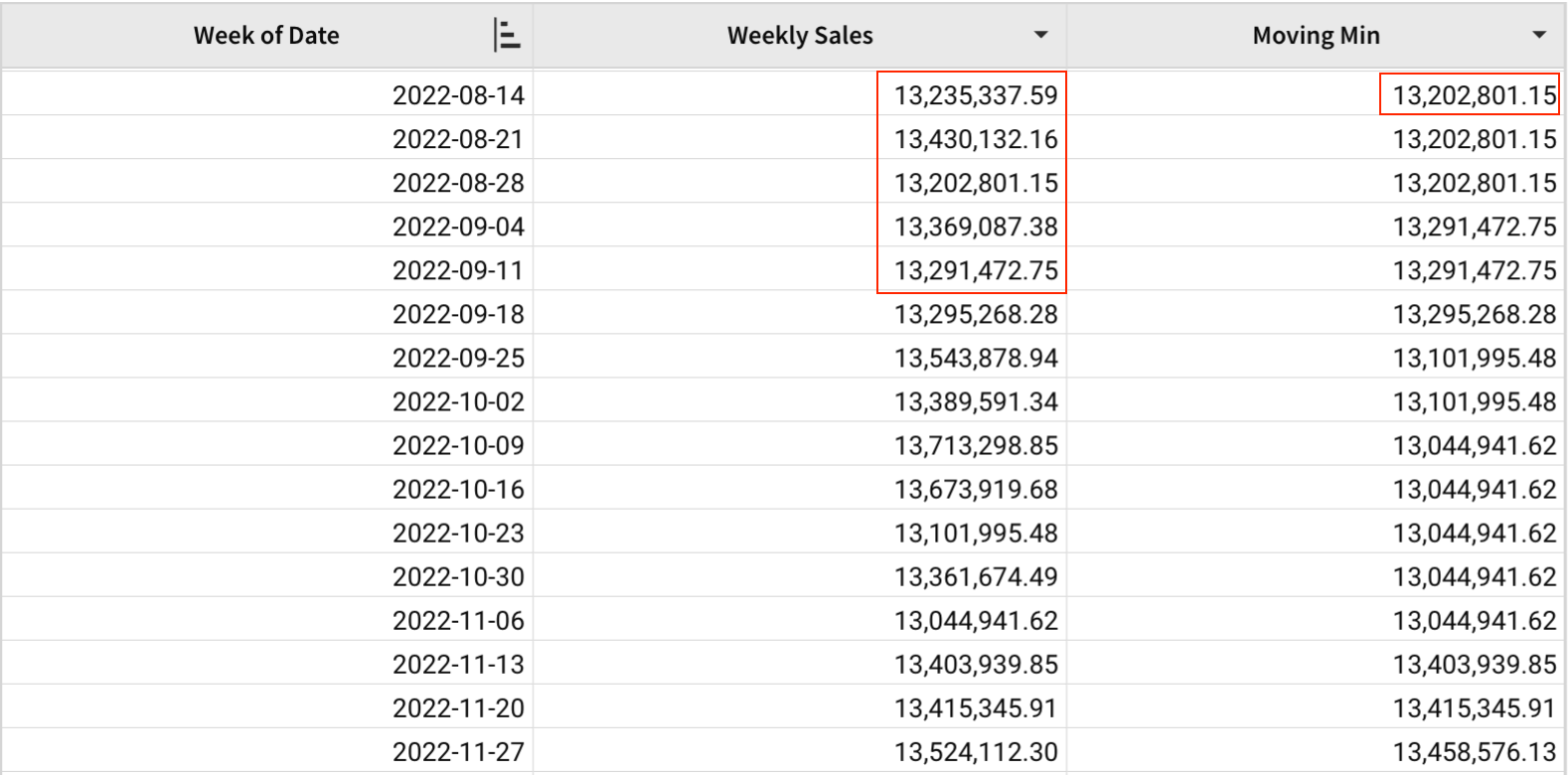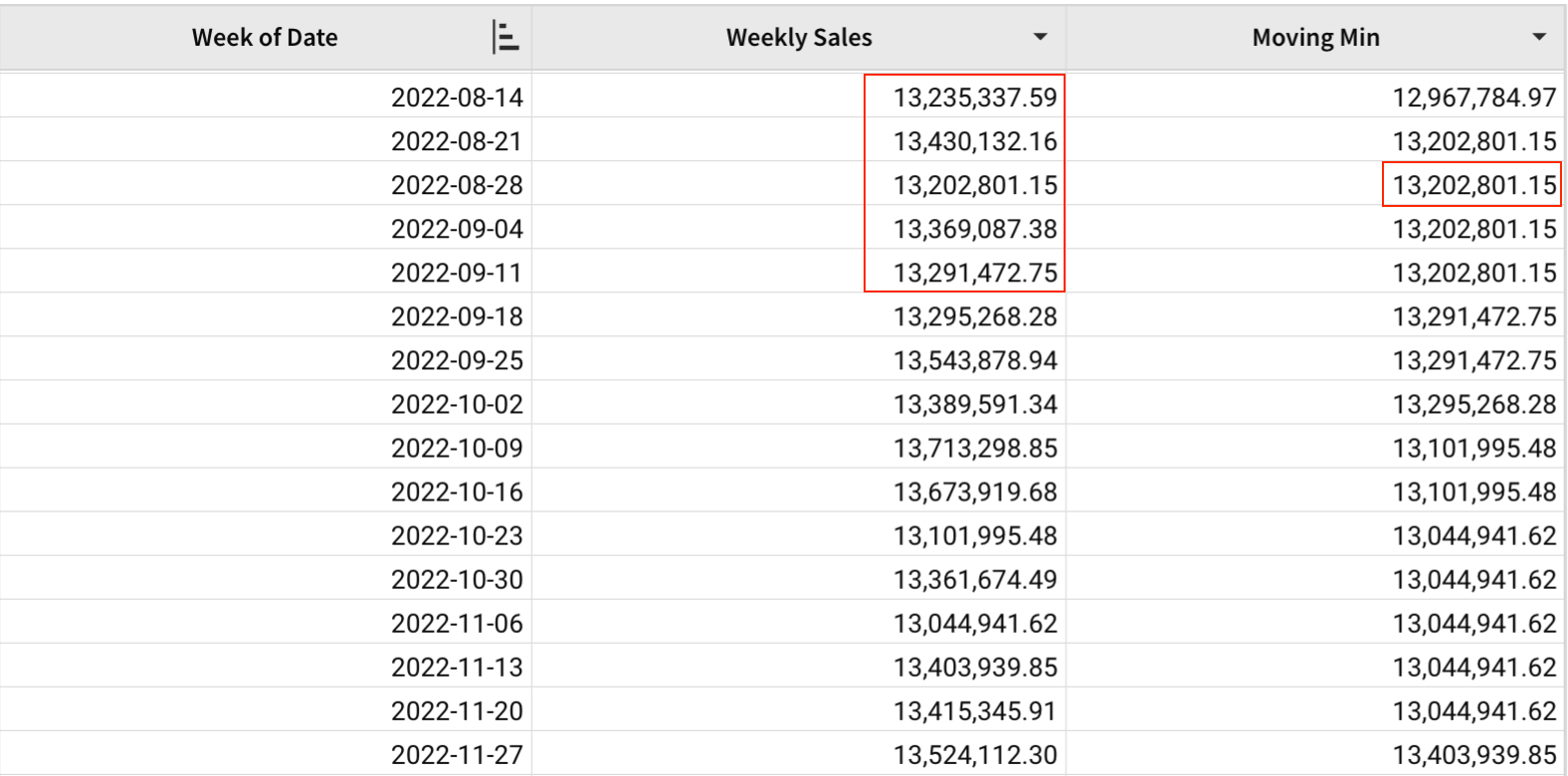MovingMin
The MovingMin function finds the minimum value of a column within a moving window.
Syntax
MovingMin(column, above, [below])Function Arguments:
- column (required) - The column to be searched.
- above (required) - The first row to include, counting backward from the current row.
- below (optional) - The last row to include, counting forward from the current row. Defaults to 0 (current row will be the last row included).
When using this function without a sort enforced, there can be unexpected results. In order to ensure that the values are stable, verify that there is a sorted column within the table.
Example
A table lists the weekly sales for the past year. The table is sorted ascending by the week. The MovingMin function can be utilized in order to find the minimum value within specific windows.
MovingMin([Weekly Sales], 4)With [Weekly Sales] as the column argument and 4 as the above argument, the minimum weekly sales value is calculated for each week along with the four previous weeks. Because the below argument is not specified, it defaults to 0.

MovingMin([Weekly Sales], 0, 4)Here, the above argument is 0, so there isn't any previous weeks included in the minimum calculation. The below average is 4, the minimum weekly sales value is computed for each week along with the next 4 weeks.

MovingMin([Weekly Sales], 2, 2)Here, the above argument is 2, so the previous two weeks is included in the minimum calculation. In addition, the below argument is 2, so the following two weeks is also included.

MovingMin([Weekly Sales], 8, -4)Here is an example where the below parameter is negative. The below parameter can be negative as long as the value is less than that of the above parameter. In this example, each window begins 8 weeks before the current week and ends 4 weeks before the current week, inclusive.

Updated 3 months ago
